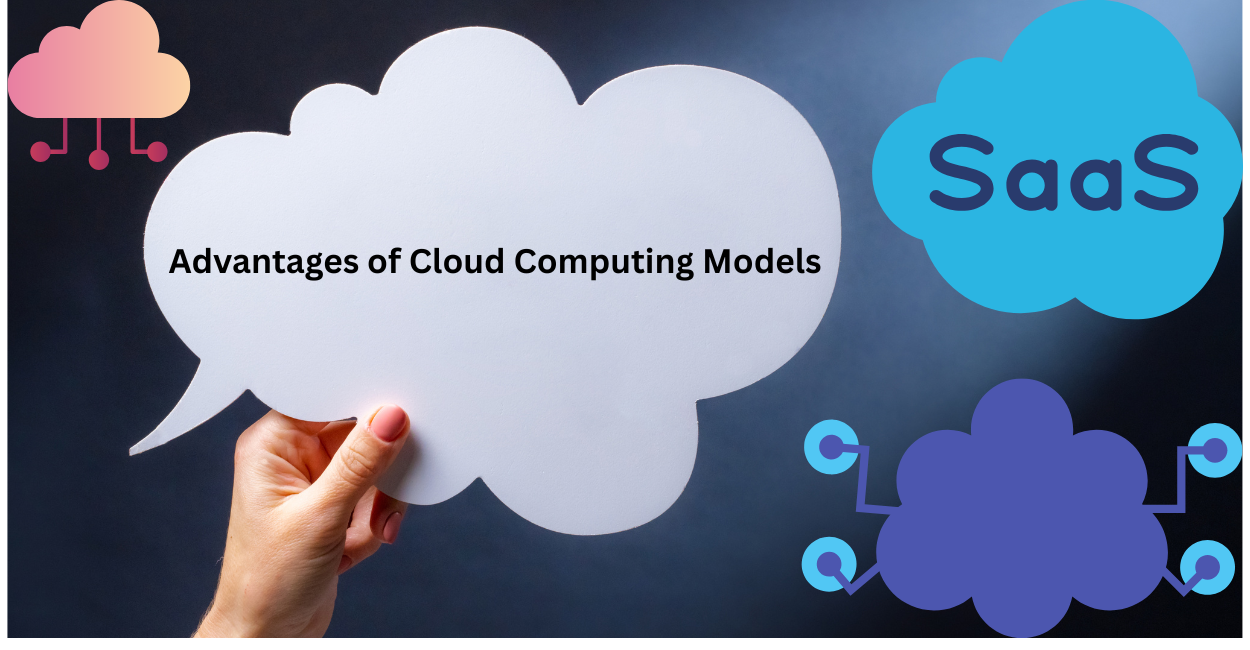Cloud Computing Services Models: Comprehensive Guide on IaaS, PaaS, SaaS, and FaaS
Published: 04 Apr 2025

Cloud Computing Services Models: Integrating cloud computing services into everyday procedures has become a global trend that businesses are eager to adopt. Businesses no longer need to purchase costly, tangible hardware, as they can now acquire computing services online. This development of new cloud computing models fulfills the requirements of scalability, flexibility, and cost reduction. A broad spectrum of services is available from software to complete infrastructure business management and everything in between. Regardless of the classification, whether Infrastructure as a Service (IaaS) or Function as a Service (FaaS), each service is designed to suit its requirements and assist organizations in streamlining their processes, enabling them to grow.
Understanding and recognizing how to navigate the cloud computing landscape is a significant challenge for a few. Choosing the right model and which ones can have a substantial impact on business operations could alter the way you work. From a small start-up to a growing colossal business, a better cloud model to meet your shifting needs is crucial. This article is designed to educate readers on the most critical cloud computing platforms, the advantages and examples of their use, and tips for choosing the best option for your company.
This article will help you comprehend how cloud computing works. We’ll look at the various kinds of cloud computing and their advantages and provide ideas on how to make them work for you. At the end of the class, you will have an insight into what model works best for your business and how it will improve operational productivity. Are you prepared for the high jump? Let us go!
Table of Contents
- What are cloud computing services models?
- Types of Cloud Computing Models
- IaaS Infrastructure as a Service
- PaaS Platform as a Service
- SaaS Software as a Service
- FaaS Function as a Service
- Benefits of Cloud Computing Models
- Choosing the Right Cloud Computing Model for Your Business
- Use Cases and Examples
- IaaS Use Cases
- PaaS Use Cases
- SaaS Use Cases
- FaaS Use Cases
- Conclusion:
How do cloud computing models work?
Cloud computing services models have changed the way businesses manage their digital infrastructures and services within their companies. Cloud computing has been connected to the capacity for a company to access the tools needed for its business, such as storage and computers with software, computing power, and other tools via the Internet. This allows companies to grow and save money since they no longer depend on hardware to store data.
Cloud Computing Services Models Like every technology, cloud computing offers a variety of advantages and pitfalls. The operations of different businesses and their challenges are different. This is why it has to be divided into other solutions that address the diverse needs of a particular company. Each model is structured on an arrangement of hardware and software constituting infrastructure, platforms, or services. The primary models of cloud computing are Infrastructure as a Service IaaS, Platform as a Service PaaS, Software as a Service SaaS, and Functionality as a Service FaaS.
Cloud Computing Services Models The SaaS is the most implemented model, as every organization can decide on one type or a combination of different models tailored to their needs.
Cloud computing services models, such as IaaS, are great examples. In this instance, businesses can build virtual servers swiftly and efficiently. Additionally, a health center can offer a scalable and user-friendly environment for patients with chronic diseases.
Types of Cloud Computing Models

Cloud Computing Services Models Service management and productivity enhancement are easy due to function delegation, the ability to scale remote management capabilities, and the ability to monitor. This paper focuses on remote monitoring, response mechanisms, and delegated models that support Instrumentation as a Service.
IaaS: Infrastructure as a Service
Cloud Computing Services Models What is it? IaaS gives access to the most powerful and cost-effective cloud computing. It is a cloud computing service that provides virtualized computing resources and an appropriate infrastructure for businesses. Datacenter IaaS lets businesses purchase servers, networking, storage, and other resources in a matter of minutes. Businesses using IaaS don’t need to think about the maintenance of their equipment.
Benefits:
- The ability to scale: Cloud Computing Services Models Modify your infrastructure to what you consider the requirement.
- Cost-Efficiency: You only pay to use the required products, which reduces the cost of equipment and maintenance.
- Flexibility: Modify your company’s strategic goals and operational framework in response to external stimuli.
- Known Instances: Amazon Web Services (AWS), Microsoft Azure, Google Cloud Platform (GCP).
PaaS: Platform as a Service:
Cloud Computing Services Models What is it? Its benefit is that there is no need to manage infrastructural construction or maintenance. Users can develop and run their applications with Paul’s most up-to-date software and hardware services. This is especially beneficial for companies that need assistance in creating a software application but don’t want to manage the complicated combination of hardware and software components required to produce the final product that needs to be finished.
Benefits:
- Rapid development: The process of developing can be faster and simpler when you use PaaS because the tools are in place.
- Effective: Cost-effective IT consumes less money to purchase servers and other IT resources, significantly cutting operational expenses.
- Scalability: It’s the possibility of expanding applications without infrastructure oversight.
- Widely Known Examples: Heroku, Google App Engine, AWS Elastic Beanstalk.
SaaS Software as a Service
Cloud Computing Services Models What is it? SaaS is a subscription-based service that allows users to download software programs via the Internet. The users do not have to install or upgrade any software because everything is controlled centrally. Access is only necessary through a web browser.
Benefits:
- Installation and maintenance are not required. The software functions perfectly without any local installation or update needed.
- Accessibility: You can access your program anywhere around the globe as long as there is Internet access.
- Scalability: Users are easily removed or added to the needs of the business.
- Popular Examples: Google Workspace, Salesforce, Microsoft 365
FaaS: Function as a Service
Cloud Computing Services Models Developers can implement single-code sections that respond to certain situations with the help of FaaS. FaaS incorporates serverless computing, meaning that the developer doesn’t need control of the system. It’s best used with microservices and small apps.
Benefits:
- The Event-Driven Functionality: These are economical because they are activated when a particular event occurs.
- No infrastructure management: There is no infrastructure within the system, similar to servers, that must be maintained.
- Flexible: It is easily modified as it monitors and automatically alters its scale based on its use.
- Notable Implementations: AWS Lambda, Azure Functions, Google Cloud Functions
Advantages of Cloud Computing Models

Cloud Computing Services Models Since the dawn of cloud computing, business functions have changed dramatically.
Here are some ways these models can benefit businesses:
- Cost savings: Cloud-based services eliminate the need for colossal costs upfront because they operate on a pay-per-use system. Companies do not need to invest large sums in hardware and software.
- Scalability: Unlike other types of technology, cloud computing permits firms to be free of worries about the limits of capacity when scaling resources.
- Flexible cloud: computing models allow companies to choose between infrastructure, software, and developer platforms based on the requirements of their clients.
- Disaster Recovery: Cloud computing generally includes automated recovery, meaning recovery and data are available in case of a disruption.
- Safety: Cloud Computing Services Models The most well-known cloud service providers typically spend a substantial sum of money on security features, thus protecting their users from cyber threats.
Choosing the Right Cloud Computing Model for Your Business

Cloud Computing Services Models When choosing a model for your computer, take note of the following factors.
- Business requirements: What would you like to achieve? If you’re looking to develop applications swiftly, it’s recommended that you consider PaaS. If you’re searching for simple computing features, the IaaS might be a viable alternative.
- Cost factors to consider: Cloud Computing Services Models Each cloud service may reduce costs, but each has its cost structure. The SaaS model relies on subscription fees, while IaaS and PaaS can charge based on consumption.
- Scalability – If you plan on growing your company quickly, choose an option that is easily scalable..
- Manage preferences Manage Preferences: If you want to remain completely uninvolved in controlling any hardware or software, you can do it with SaaS.
Use Cases and Examples (IaaS, PaaS, SaaS, and FaaS)
Cloud Computing Models Let’s examine some “real-life” models to see how each cloud model fits.
IaaS Use Cases
- Web Hosting: Because businesses utilize the Internet to market their services and products, IaaS is a great alternative for hosting web-based apps and websites, eliminating the need to purchase physical hardware.
- Virtual Machines: Cloud Computing Services Models Companies requiring high-performance computing can easily create virtual machines using IaaS. Virtual machines can be set up quickly and later at a later time.
PaaS Use Cases
- Application Development PaaS can be the perfect solution for those obliged to build web or mobile applications since it is an excellent tool for developing code, testing, and deploying without the need to support infrastructure.
- Business Analytics: Most PaaS systems are used to perform computing analytics. This lets users assist other companies by making use of their data.
SaaS Application Scenarios
- Salesforce is an acclaimed SaaS application that assists businesses in coordinating customer relations and sales processes. Salesforce is a vital tool to manage customer relations (CRM).
- Google Workspace and Microsoft 365 are productivity suites with emails, documents, and tools for team collaboration that allow for simple and efficient business management.
FaaS Application Scenarios
- FaaS is the ideal solution to process real-time data, such as looking at streams from social media channels and processing transaction data. These examples are a part of the real-time processing of data.
- FaaS lets developers reduce software into smaller units, improving the efficiency of developing, testing, and scaling. The smaller parts are referred to as microservices.
Conclusion:
Cloud Computing Services Models Companies can utilize various cloud computing services based on their needs. This approach is highly adaptable and efficient and can improve operations efficiency. Understanding the structures of services present in IaaS, PaaS, SaaS, and FaaS assists in selecting the right model. Cloud computing improves operational efficiency and business revenue by facilitating hosting infrastructures and app development.
Which service model to use is dependent specifically on the subtleties of the day-to-day activities of a certain firm. Cloud Computing Services Models: You can assess the advantages of each model and use examples to determine which will produce the best outcomes. Cloud computing is not a non-issue. Computing. Dismissing it as a trend that is just emerging could lead to significant reductions in the competitiveness of your business.
Cloud Computing Services Models This article explains what companies seeking opportunities to grow should be aware of when adopting various cloud computing platforms. The options are numerous in how they are implemented.
FAQs
1-In the case of offering, what types of cloud services are available?
The subdivided categories of resource sharing include: Infrastructure as a Service (IaaS), Platform as a Service (PaaS), Software as a Service, and Function as a Service (FaaS) which provide variable depths of platforms or applications.
2-The term “cloud computing” is self explanatory.
Cloud computing is beneficial for managing your business. Virtual access to different services lets users be more flexible, as they can manage their data without the requirement for physical devices. Storage and computing are available to organizations and assigned to them.
.3-What exactly is cloud computing?
Online resources are available when needed rather than using a privately owned network. Businesses don’t need to purchase locally accessible machines, equipment, or software.
4-Why should you choose cloud computing?
Cloud computing has numerous benefits. It decreases total cost, boosts scale, and boosts business efficiency because it’s flexible regarding access to virtual resources instead of physical assets.
5-Who will benefit from cloud computing?
Cloud services benefit every kind of user, from small businesses to large corporations to smaller enterprises, since they provide a simple and efficient way of addressing daily management challenges.

- Be Respectful
- Stay Relevant
- Stay Positive
- True Feedback
- Encourage Discussion
- Avoid Spamming
- No Fake News
- Don't Copy-Paste
- No Personal Attacks



- Be Respectful
- Stay Relevant
- Stay Positive
- True Feedback
- Encourage Discussion
- Avoid Spamming
- No Fake News
- Don't Copy-Paste
- No Personal Attacks





